Amidst the threats of resource scarcity, bamboo has emerged as a renewable material that paves the way for a greener future. In contrast to hardwood, it can continue to grow without the need for replanting. It can also be transformed into innovative products, one of which is laminated bamboo trays for eating.
What is Laminated Bamboo material?
Laminated bamboo is produced from flat bamboo strips, which are horizontally or vertically glued and hot-pressed into panels. It is unsurpassed in many areas, especially when looking for homewares.
As an alternative to hardwood, laminated bamboo possesses a very sturdy and stable structure. This versatile material can be used in nearly all creative industries. Laminated bamboo panels, beams, flooring, and decking boards are just a few possibilities. In the world of homewares, laminated bamboo trays for eating are on the rise. And that is not without reason.
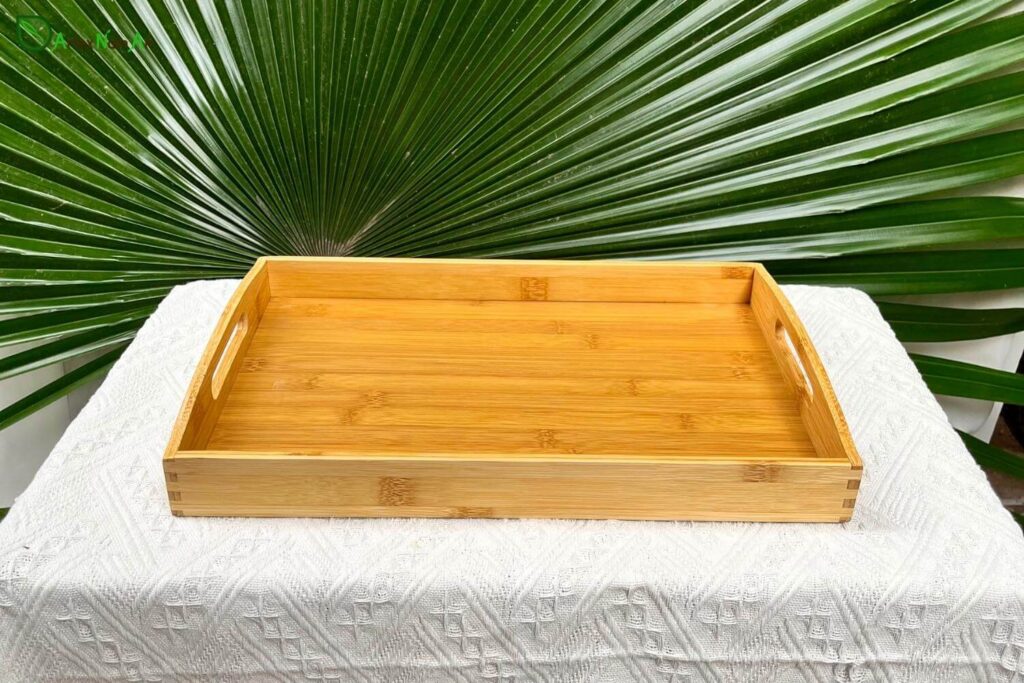

The main advantage of laminated bamboo is its long lifespan and durability. Bamboo is commonly extolled as being more mold-resistant and inherently antibacterial than other wood. What’s more, each bamboo product is unique with its own earthy color and grain patterns. This natural look brings an inviting ambience and complement any space.
Which Bamboo for making Laminated Bamboo?
Not all species of bamboo are suitable for producing laminated bamboo. In Vietnam, laminated bamboo is produced exclusively from the Luong (Dendrocalamus Barbatus) variety which are commonly found in the Northern provinces, particularly in Thanh Hoa, Hoa Binh, and Nghe An.
The Luong variety has robust stems with a diameter of 10cm, and is among the hardest bamboo species in the world. During the growing season, the shoots will sprout from the ground and reach 20 meters in length within only 6 months. Another 4-5 years is needed for the stems to reach full maturity and be ready to harvest.
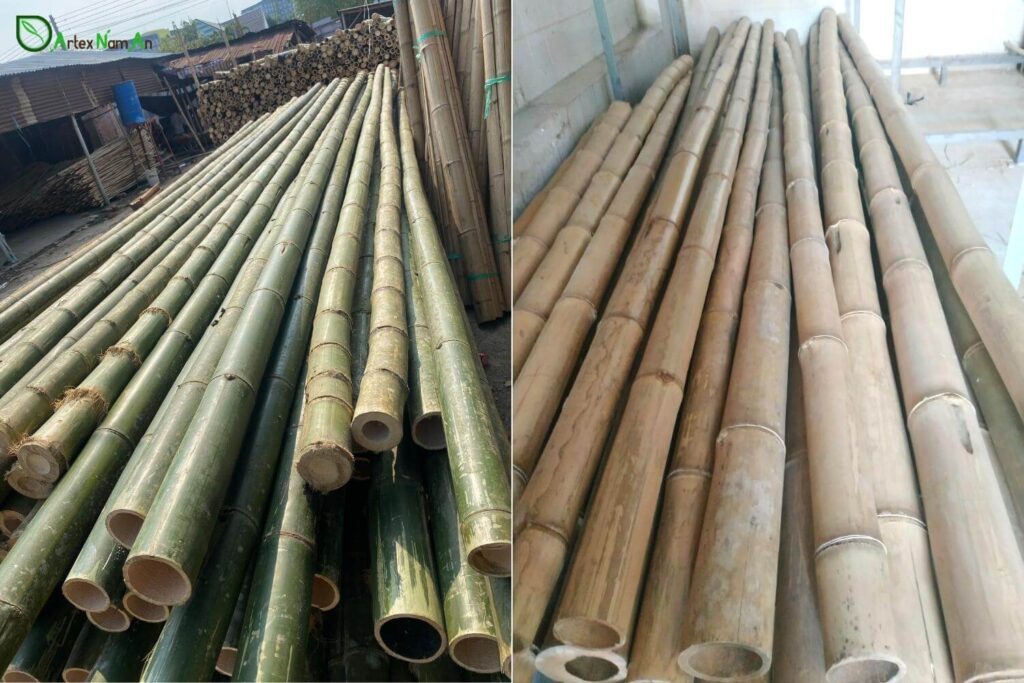

How are Laminated Bamboo panels made?
Selecting bamboo material
The bamboo stems are selected according to a set of stringent criteria. They must not contain any serious defects or pests, and fulfill the criteria for sturdiness, thickness, and diameter as well.
The ideal age for bamboo stems to be harvested is at least 3 years old. Younger stems are not entirely rigid and, therefore, will not have the density and durability required. Older ones, on the other hand, have a grey color which causes unappealing stains in the final products.
Making strips from hollow bamboo stems
Once the raw materials have been harvested, they are brought into a factory to be processed. Here, well-qualified bamboo stems will be passed through a splitting machine and sawn into 2.5m long pieces, split lengthwise into strips called raw splits.
Planing & Strengthening bamboo strips
The raw splits are then put in a planing machine to remove their outer and inner skin, after which they are strengthened for further processing. This process will determine the quality of gluing and bonding in the following steps.


Steaming split bamboo strips
After being planed and strengthened, the bamboo strips undergo a steaming process. This helps to remove the naturally present lignin content from the bamboo stems and eliminate any potential insects, making the material more durable and stable.
To resist termites, bamboo material used to be submerged in water for months for the lignin content to decompose. Nowadays, this method has become outdated. Current treatment technology is steaming which accelerates the decomposition of lignin. During this process, the sugar will quickly dissolve in water and be discharged out of bamboo fibers. Compared to its previous method, steaming has solved the problem of inefficiency and mitigated the risks for water pollution.
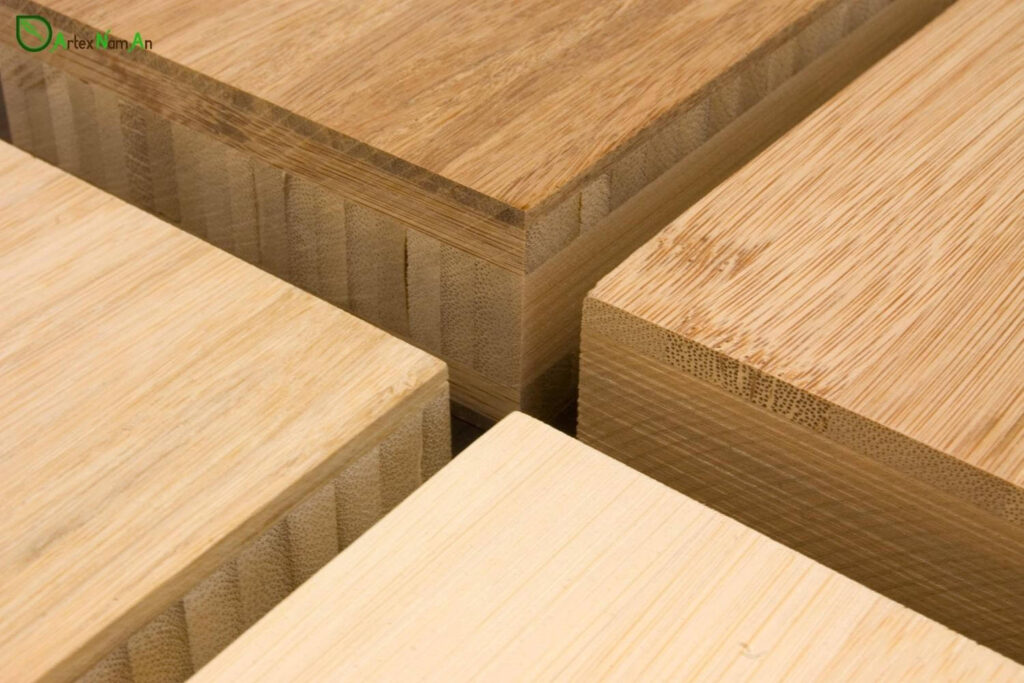

Without thermal treatment, the material retains its natural color of light yellow. If steamed, they become darker and more brownish like caramel. Alternatively, they can be thermally treated at 200°C to acquire a dark brown color similar to chocolate.
Drying & Sanding bamboo strips
During this step, bamboo strips are typically placed in a drying room until they reach the necessary moisture of 8 – 10%. The moisture content significantly determines the quality of the final bamboo products. Bamboo strips whose structure is not sturdy enough or emits humidity are to be singled out. The qualified ones will go through a sanding process to ensure it has a smooth surface for the pressing stage.
Pressing strips into laminated panels
After being applied glue on, dry bamboo strips are then heat-pressed to produce a one-layer panel. In making laminated bamboo beams (panels), heat-resistant glue is used, which ensures waterproof, moisture resistant, and best bonding.
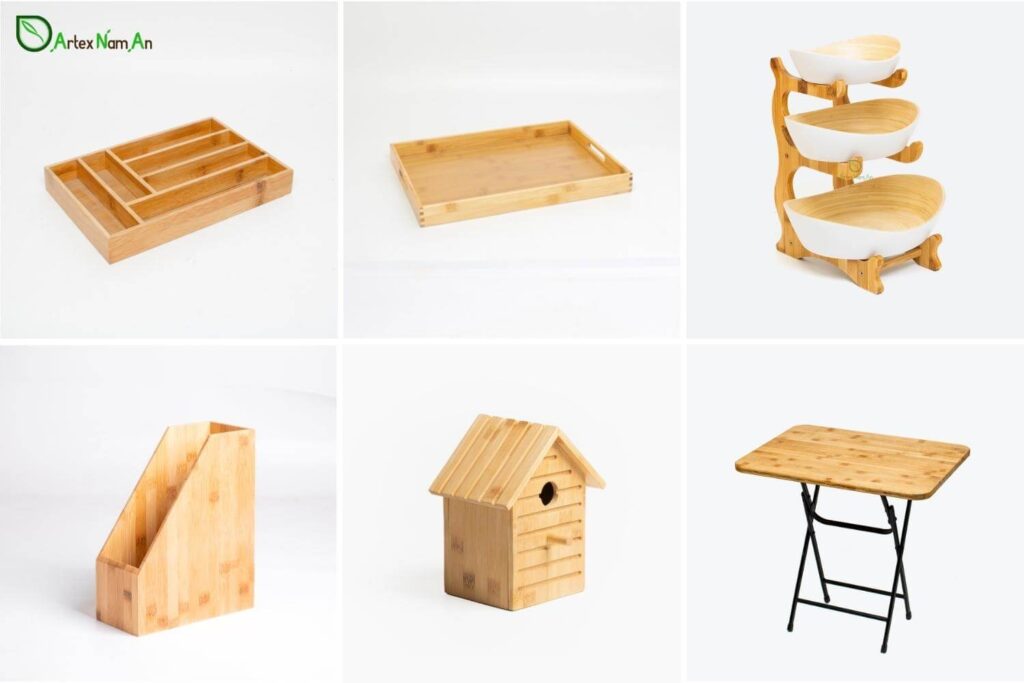

Depending on the type of product and required dimensions, the bamboo strips can be glued and joint together in different manners, which can be categorized according to:
- Orientation: Plain laminate (horizontal), side laminate (vertical), mixed laminate
- Number of layers: 2-layer, 3-layer, 5-layer, 7-layer, 9-layer
Subsequently, glue is applied to the separate one-layer panels to create a multilayer panel. The panel/beam is then sawn, sanded and cut to become the final product.
How are Bamboo Trays for eating made?
Bamboo tray making
At the factories, laminated bamboo panels are chopped to have the standard size and fineness, with variations in thickness available upon request. After that, they are glued together to make the final tray.
Durable, artful, and expertly processed from Vietnam, laminated bamboo serving trays in bulk can come in various shapes and sizes, and thus can serve a wide variety of purposes.
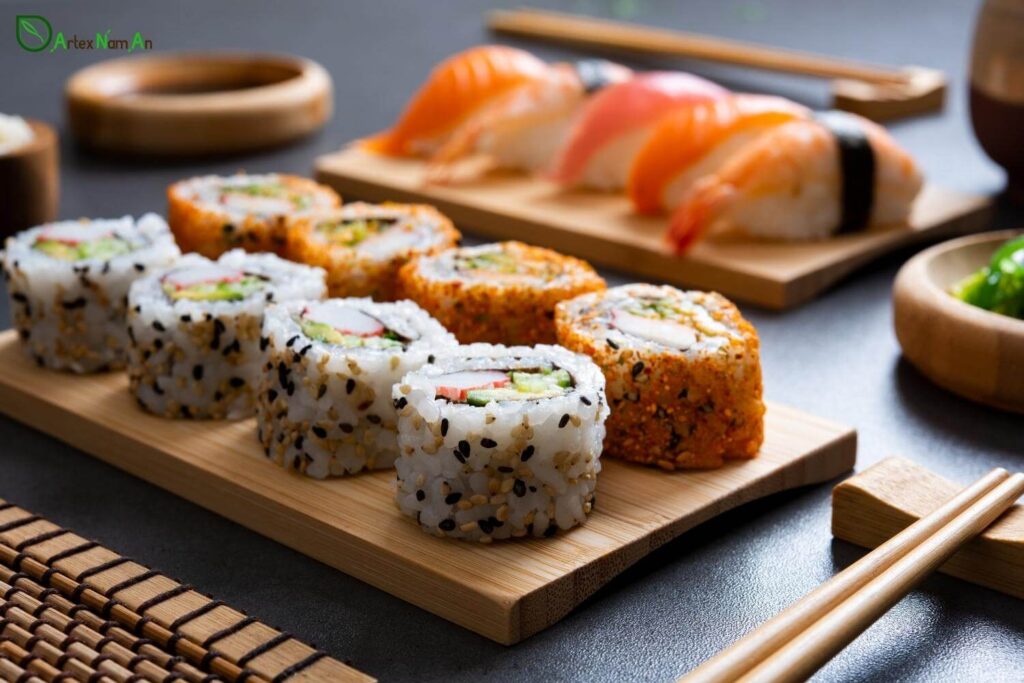

Bamboo tray finishing
During this process, the outer surface is coated with special PU paints to make the trays last long. In particular, the PU layers protect them from developing mold, or give them a more glossy look. What’s more, customized logos can also be laser printed on bamboo trays for eating according to customers’ needs.
Bamboo Trays for Eating: Uses & Cares
What is a bamboo tray used for?
Bamboo trays for eating wholesale are versatile. Made from high-quality bamboo, the serving trays in bulk are suited for carrying breakfast, dinner, cake, coffee, drinks, as well as small items. They can be used in dining tables, kitchens, bedrooms, and other indoor uses, but also in outdoor parties and gatherings.
Not just for serving and decorating, wholesale bamboo trays can work well as an organizer in any room. With proper care, our bamboo serving tray wholesale can last up to 3–5 years of use and more.
Are bamboo trays 100% safe for users?
Bamboo trays for eating wholesale are antimicrobial in nature and require no harmful treatments. They are totally safe, non-toxic, and do not cause itching. Importantly, they are thoroughly tested in order to comply with the requirements of LFGB Food Contact Grade Testing and REACH Certificate of Compliance.
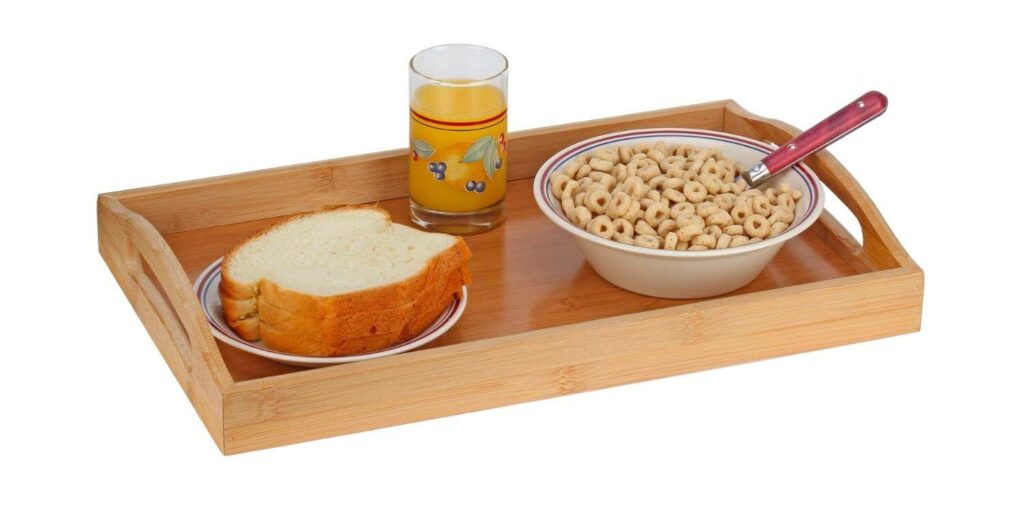

Are bamboo trays washable?
Even though bamboo is very sturdy, bamboo trays for eating should not be placed in a dishwasher and a microwave oven, as high heat and long exposure to moisture would cause trays to get moldy, crack, break, and shorten their lifetime. They ought to be hand washed immediately after every use.
Are bamboo trays waterproof?
Bamboo serving trays wholesale can resist water pretty well. In fact, laminated bamboo is not totally waterproof and weather resistant. Bamboo materials may absorb water due to improper handling or prolonged exposure to moisture, which can cause cracks or molds.
How do you clean a bamboo tray for eating?
First, wipe out the tray and wash it in warm water with mild soap and a soft sponge. Then, rinse thoroughly to remove all soap residue and wipe dry with a clean cloth. Finally, keep the tray in a dry ventilated place to remove excess moisture. Do not dry bamboo serving trays wholesale with high heat, and do not soak in water for a long time.
Like any other natural products, bamboo trays for eating can crack eventually. To prevent this, periodically treat them with a light coating of oil. Also, we recommend avoiding abrasive cleaners, as this will cause the trays to lose their sheen and natural luster.
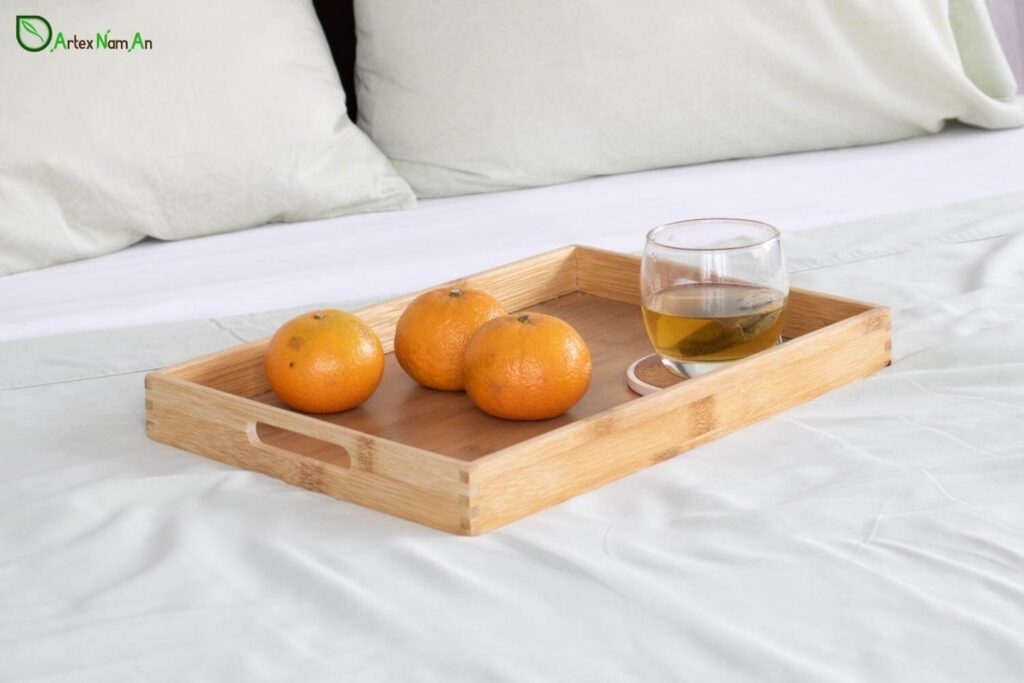

Keys Takeaways
Versatile, elegant, yet durable, interior spaces and also outdoor events are where laminated bamboo proves its functionality and aesthetic value. It is indisputably a trendy material, and as such, it can take bamboo trays for eating to new heights. In the essential transition towards a greener future, it is without a doubt that bamboo offers endless possibilities!

You may also be interested in
Fern – Durable Weaving Material For Wholesale Picnic Baskets & Homewares
Read more...Mar
Explore Home Decor Trends 2021 / 2022: A Big Focus On Comfort
Read more...Jun
Ocean Freight Rates Continue to Skyrocket in 2021
Read more...Aug
Care Guidelines For Your Business: How To Preserve Wicker Baskets
Read more...Jun
Seagrass Material: 3 Highlights About Handicraft Production Process
Read more...Dec
6 Seagrass Weaving Styles For Eco-friendly Storage Baskets Wholesale
Read more...Apr